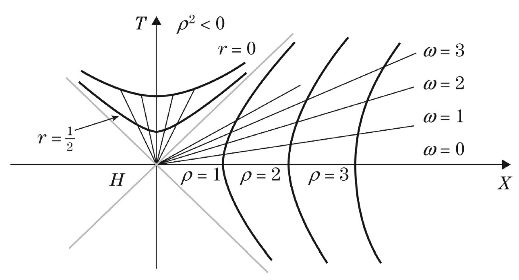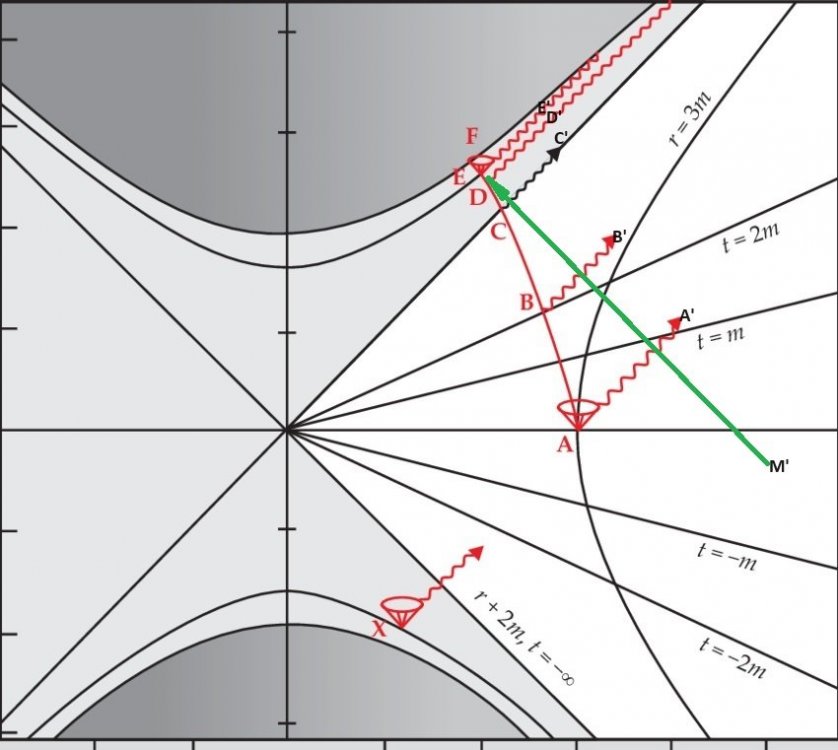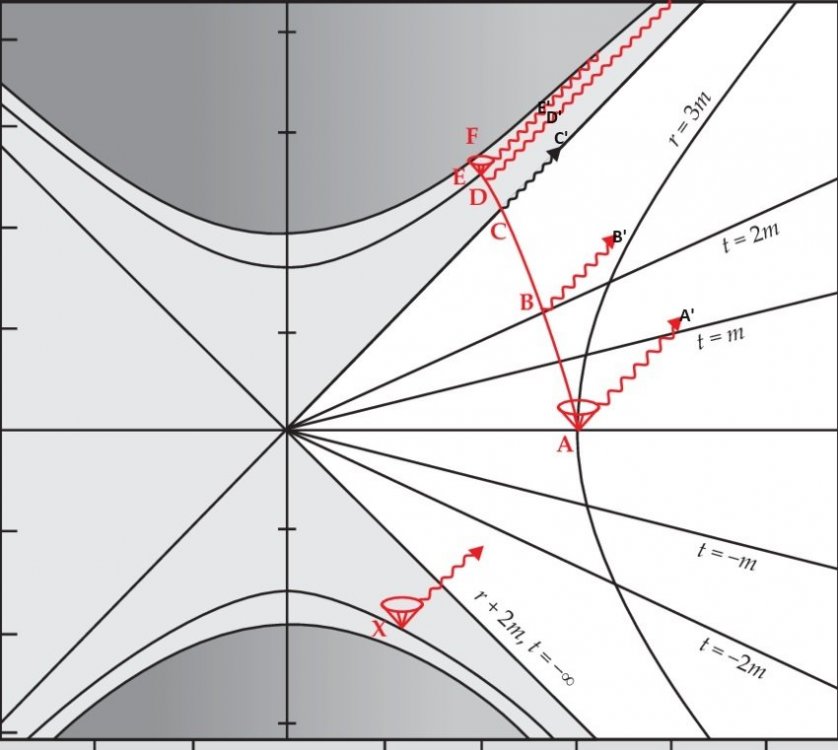

Genady
-
Posts
5110 -
Joined
-
Days Won
51
Content Type
Profiles
Forums
Events
Posts posted by Genady
-
-
They're going around forums promoting this article: link removed
0 -
9 minutes ago, Centauri said:
In systems theory, the measurement process is not a mystical matter.
OTOH, from the article:
QuoteThe monistic systems theory of quantum mechanics describes the lowest level of our world. What characteristics are evident there? At this level one finds effective laws that interact with one another. These interactions show up in experiments physically and materially. Spirit and matter form a unity. The validity of natural laws and the stability of systems goes hand in hand with the observance of ethical principles. Love (symbioses), justice (natural laws), equality (before the law), freedom (degrees of freedom) and diversity (systems) appears at the lowest level. Ethics, logic and mechanics form the basis of our world.
Sounds quite mystical to me.
2 -
8 hours ago, geordief said:
Are there any spatial coordinates that apply inside the EH and can they be visualized?
I want to add to the @Markus Hanke's explanation above, that there are two more spatial coordinates, the "latitude" and the "longitude", which apply in the same way inside the EH as outside it. They are not shown on the Kruskal diagrams.
0 -
5 minutes ago, Luc Turpin said:
So primed c cannot been seen as he has passed EH and faded away, while unprimed c has not passed EH and then can still be seen
It depends on a "seeing" event. Draw two 45o light rays up from any event: it can be seen at any event on these rays.
0 -
13 minutes ago, Luc Turpin said:
unprimed c cannot been seen ... while unprimed c ...
You said "unprimed c" twice, so I don't know what you mean. Anyway, event C is seen at event C'.
0 -
3 minutes ago, Luc Turpin said:
I was visually seeing it on the diagram, but cannot grasp the concept conceptually!
Am-I asking a silly question if I ask if there is a difference in seing at EH as opposed to inside the BH?
The 45o line that goes through the origin and the events C and C', is a worldline of EH. The greyish area above it and to the left, with the events D, E, D', E', is inside the BH. The white area to the right and below - outside the BH. The hyperbola separating the light grey and the dark grey, with event F on it - singularity.
0 -
-
25 minutes ago, Luc Turpin said:
Will do!
This will help. As Susskind says in the General Relativity: The Theoretical Minimum,
Quoteit is very important to grasp perfectly the fundamental diagram of space-time near a black hole, shown in figure 5, in order to understand gravitational fields created by massive bodies, and eventually the theory of general relativity.
This is the figure 5, for reference:
 0
0 -
23 minutes ago, joigus said:
backward-sent photon
All photons behind the horizon, in this diagram, go toward the singularity. There are no "backward-sent photons" there.
52 minutes ago, Luc Turpin said:The unprimed observer would also see the primed observer, but motionless as he has already fallen through the horizon! Correct?
Incorrect.
Use the Kruskal diagram to find who sees whom and how.
0 -
1 hour ago, MigL said:
You're going to have to elaborate, Gemady.
I don't see how an observer would be able to see anything ahead of himself upon passing through the Event Horizon, as there are no geodesics for light to follow in the outwards direction.
The only available geodesics are forward in time to the center.The primed observer, falling through the horizon at event C', sees the unprimed observer, which is falling through the horizon at event C.
1 -
Just now, geordief said:
What about a small BH?
The same. As long as the falling objects are much smaller than the BH.
1 -
1 hour ago, geordief said:
if two objects follow each other through the event horizon of a very large BH ,does the second object see the first object as it passes the EH?
Yes.
1 hour ago, geordief said:would a Pinocchio lose the sight of the end of his nose first as he passes the threshold?
No.
0 -
Do you have any discussion points pertaining to Astronomy and Cosmology?
0 -
Does time exist?
Yes, it does.
0 -
42 minutes ago, chron44 said:
This is especially noticed in the spacetime interval concept involved in the GR formulas:
ds^2=−c^2dt^2+dx^2+dy^2+dz^2
The formula above is correct only for a flat spacetime in Minkowski coordinates. The general GR formula is, $$ds^2=g_{\mu \nu} dx^{\mu} dx^{\nu}$$ (the summation convention implied.)
42 minutes ago, chron44 said:crucial ds parameter included in the formulas
In GR, this "crucial parameter" does not appear in any important formulas.
42 minutes ago, chron44 said:separable events
There is no such thing. It is either one event or separate events.
42 minutes ago, chron44 said:time in GR, for example, is treated both - like - it was the 4th spatial dimension
Nowhere in GR time is treated as the 4th spatial dimension.
0 -
31 minutes ago, exchemist said:
it's time this discussion is moved to "Speculations".
Absolutely!!!
Please, moderators, do this right thing!
0 -
What does make you think about hyperbolic planes?
What do you mean by "the field of physics"?
0 -
9 minutes ago, SillyLilGuy said:
Hello. I am a high school student with only a bit of knowledge of physics that I picked up from a few textbooks, and god knows where. I've been thinking about hyperbolic planes and the field of physics. Like what if hyperbolic planes have something to do with some of the forces we have in the universe? What if the electromagnetic field (example) is a hyperbolic plane that expands past the euclidean plane, what would that look like? Am I stupid? If so, please don't insult me. I'm just a high school student who's very interested in the topic of science and doesn't really have much to go off of. If not, I wonder if there's some studies on this I could check out, and perhaps study physics more and make a paper on my own.
Also, if this is in the wrong category, let me know. I'm not very used to forums.
What physics do you know?
And, as mathematics is the language of physics, what mathematics do you know?
Relating to your post, what do you know about hyperbolic planes, fields in physics, forces, electromagnetic field, Euclidean plane?
0 -
10 hours ago, chron44 said:
So, is the general "message" here physics or metaphysics?
Neither. It is just nonsense.
0 -
5 hours ago, Dhamnekar Win,odd said:
Rn be the radius of the concentric circles inside the big circle.
No, this is not so. Here it is:
On 1/5/2024 at 6:35 AM, Dhamnekar Win,odd said:Rn be the radius of the circle encompassing all small circles except those in the outer layer.
0 -
15 minutes ago, chron44 said:
Don't answer me then.
Not answering is not enough. I use filters provided by the site's software to avoid seeing such bs on my screen. The site's organization provides clear separation of different forums. By violating this separation, you piss in my yard.
1 -
1 minute ago, chron44 said:
not legitimate in a true physical academic manner
This is what defines if it belongs to this forum. So, your stuff can be "research" somewhere else, but it is spam here.
0 -
2 minutes ago, chron44 said:
ChatGPT maybe not is a all true considered reference, but I consider this being a fair reference.
Science does not consider it a legitimate reference. Your "quest" is not a science, your "reference" is not a scientific reference. Take your thread and go elsewhere. Stop spamming the science forum.
0 -
1 hour ago, chron44 said:
This quest is on the agenda of modern physics
Do you have a reference to this?
0



Computing the expectation of the minimum difference between 0th i.i.d. random variable and ith i.i.d.random variable where 1≤ i ≤ n
in Applied Mathematics
Posted
I think that this solution uses a prior result to the effect that
which can be derived using CDF (and perhaps integration by parts).